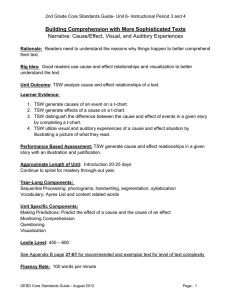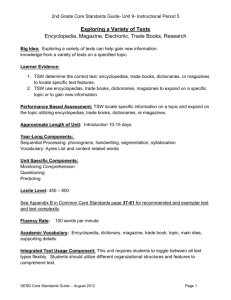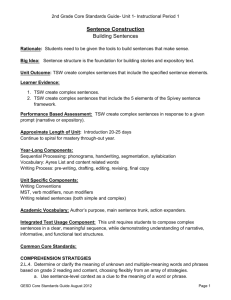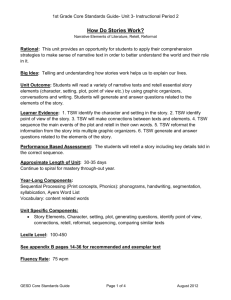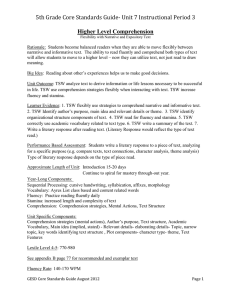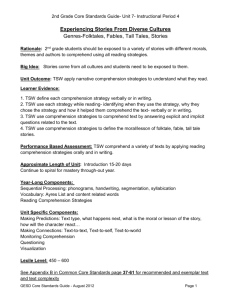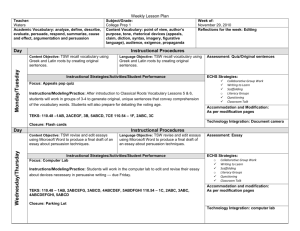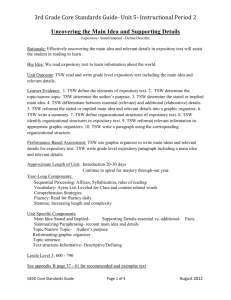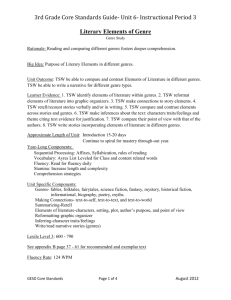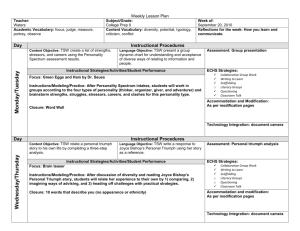7.R.5 Functional Text
advertisement
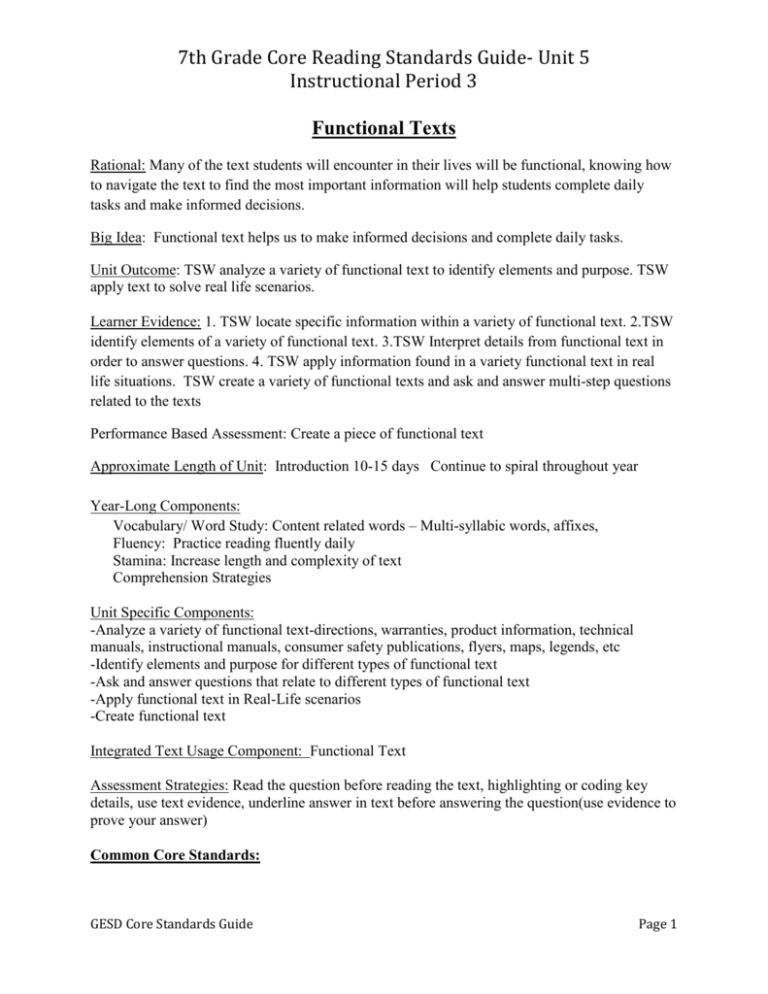
7th Grade Core Reading Standards Guide- Unit 5 Instructional Period 3 Functional Texts Rational: Many of the text students will encounter in their lives will be functional, knowing how to navigate the text to find the most important information will help students complete daily tasks and make informed decisions. Big Idea: Functional text helps us to make informed decisions and complete daily tasks. Unit Outcome: TSW analyze a variety of functional text to identify elements and purpose. TSW apply text to solve real life scenarios. Learner Evidence: 1. TSW locate specific information within a variety of functional text. 2.TSW identify elements of a variety of functional text. 3.TSW Interpret details from functional text in order to answer questions. 4. TSW apply information found in a variety functional text in real life situations. TSW create a variety of functional texts and ask and answer multi-step questions related to the texts Performance Based Assessment: Create a piece of functional text Approximate Length of Unit: Introduction 10-15 days Continue to spiral throughout year Year-Long Components: Vocabulary/ Word Study: Content related words – Multi-syllabic words, affixes, Fluency: Practice reading fluently daily Stamina: Increase length and complexity of text Comprehension Strategies Unit Specific Components: -Analyze a variety of functional text-directions, warranties, product information, technical manuals, instructional manuals, consumer safety publications, flyers, maps, legends, etc -Identify elements and purpose for different types of functional text -Ask and answer questions that relate to different types of functional text -Apply functional text in Real-Life scenarios -Create functional text Integrated Text Usage Component: Functional Text Assessment Strategies: Read the question before reading the text, highlighting or coding key details, use text evidence, underline answer in text before answering the question(use evidence to prove your answer) Common Core Standards: GESD Core Standards Guide Page 1 7th Grade Core Reading Standards Guide- Unit 5 Instructional Period 3 7.RI.10. By the end of the year, read and comprehend literacy nonfiction in the grades 6-8 text complexity band proficiently, with scaffolding as needed at the high end of the range. a. By the end of the year, read and comprehend informational and functional text, including history/social studies, science, and technical texts, in the grades 6-8 text complexity band proficiently, with scaffolding as needed at the high end of the range. 7.SL.2. Analyze the main ideas and supporting details presented in diverse media and formats (e.g., visually, quantitatively, orally) and explain how the ideas clarify a topic, text, or issue under study. 7.RI.5. Analyze the structure an author uses to organize a text, including how the major sections contribute to the whole and to the development of the ideas. 7.SL.5. Include multimedia components and visual displays in presentations to clarify claims and findings and emphasize salient points. 7.L.4. Determine or clarify the meaning of unknown and multiple-meaning words and phrases based on grade 7 reading and content, choosing flexibly from a range of strategies. a. Use context (e.g., the overall meaning of a sentence or paragraph; a word’s position or function in a sentence) as a clue to the meaning of a word or phrase. b. Use common, grade-appropriate Greek or Latin affixes and roots as clues to the meaning of a word (e.g., belligerent, bellicose, rebel). c. Consult general and specialized reference materials (e.g., dictionaries, glossaries, thesauruses), both print and digital, to find the pronunciation of a word or determine or clarify its precise meaning or its part of speech. d. Verify the preliminary determination of the meaning of a word or phrase (e.g., by checking the inferred meaning in context or in a dictionary). 7.L.6. Acquire and use accurately grade-appropriate general academic and domain-specific words and phrases; gather vocabulary knowledge when considering a word or phrase important to comprehension or expression. 7.W.4. Produce clear and coherent writing in which the development, organization, and style are appropriate to task, purpose, and audience. a. Produce clear and coherent functional writing (formal letters, experiments, notes/messages, labels, timelines, graphs/tables, procedures, invitations, envelopes, maps, captions, diagrams) in which the development and organization are appropriate to task, purpose, and audience. 7.W.6. Use technology, including the Internet, to produce and publish writing and link to and cite sources as well as to interact and collaborate with others, including linking to and citing sources. 7.W.10. Write routinely over extended time frames (time for research, reflection, and revision) and shorter time frames (a single sitting or a day or two) for a range of discipline-specific tasks, purposes, and audiences. GESD Core Standards Guide Page 2 7th Grade Core Reading Standards Guide- Unit 5 Instructional Period 3 AZ State Standards: R07.S3C2.01- Use information from texts and text features to determine the sequence of activities needed to carry out a procedure. R07.S3C2.02- Determine what information (ex. Steps in directions, legends, supplies needed, illustrations, diagrams, sequence) is missing in functional texts. R07.S3C2.03- Interrupt details from a variety of functional texts (warranties, product information, technical manuals, instructional manuals, consumer safety publications) for a specific purpose (ex. to follow directions, to solve problems, to perform procedures, to answer questions). GESD Core Standards Guide Page 3
